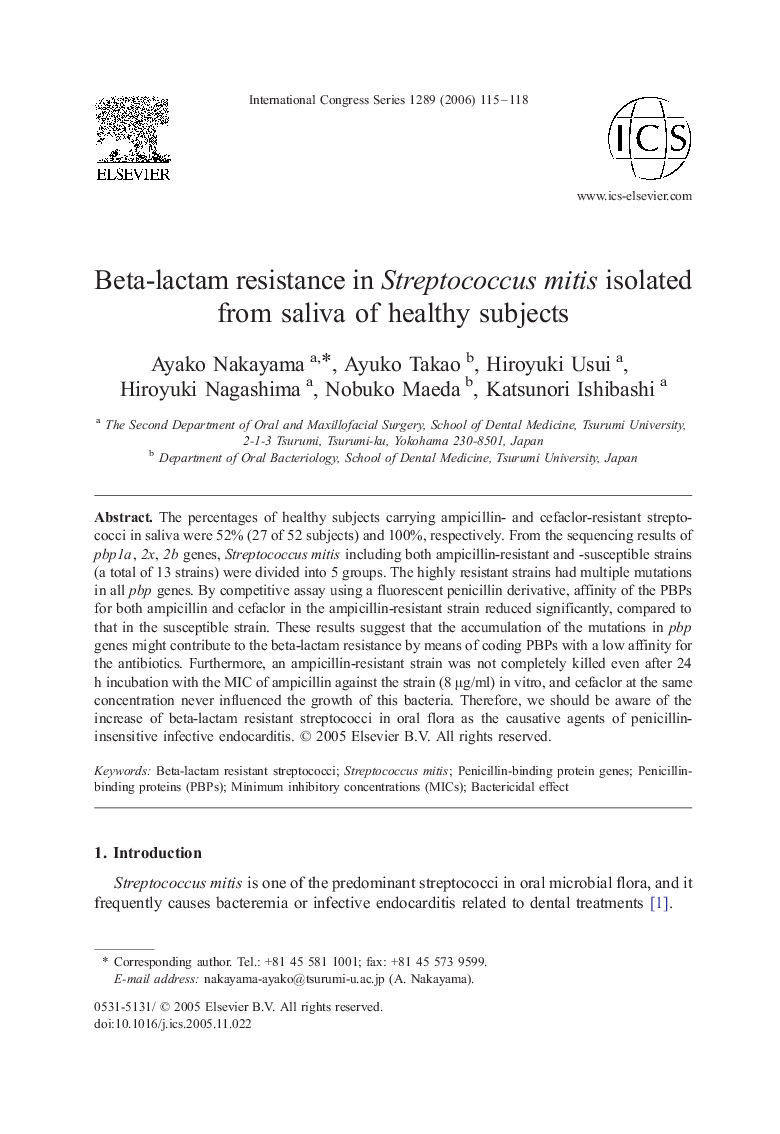| Article ID | Journal | Published Year | Pages | File Type |
|---|---|---|---|---|
| 2577419 | International Congress Series | 2006 | 4 Pages |
The percentages of healthy subjects carrying ampicillin- and cefaclor-resistant streptococci in saliva were 52% (27 of 52 subjects) and 100%, respectively. From the sequencing results of pbp1a, 2x, 2b genes, Streptococcus mitis including both ampicillin-resistant and -susceptible strains (a total of 13 strains) were divided into 5 groups. The highly resistant strains had multiple mutations in all pbp genes. By competitive assay using a fluorescent penicillin derivative, affinity of the PBPs for both ampicillin and cefaclor in the ampicillin-resistant strain reduced significantly, compared to that in the susceptible strain. These results suggest that the accumulation of the mutations in pbp genes might contribute to the beta-lactam resistance by means of coding PBPs with a low affinity for the antibiotics. Furthermore, an ampicillin-resistant strain was not completely killed even after 24 h incubation with the MIC of ampicillin against the strain (8 μg/ml) in vitro, and cefaclor at the same concentration never influenced the growth of this bacteria. Therefore, we should be aware of the increase of beta-lactam resistant streptococci in oral flora as the causative agents of penicillin-insensitive infective endocarditis.
